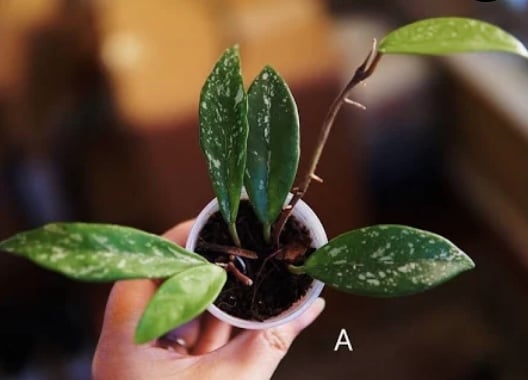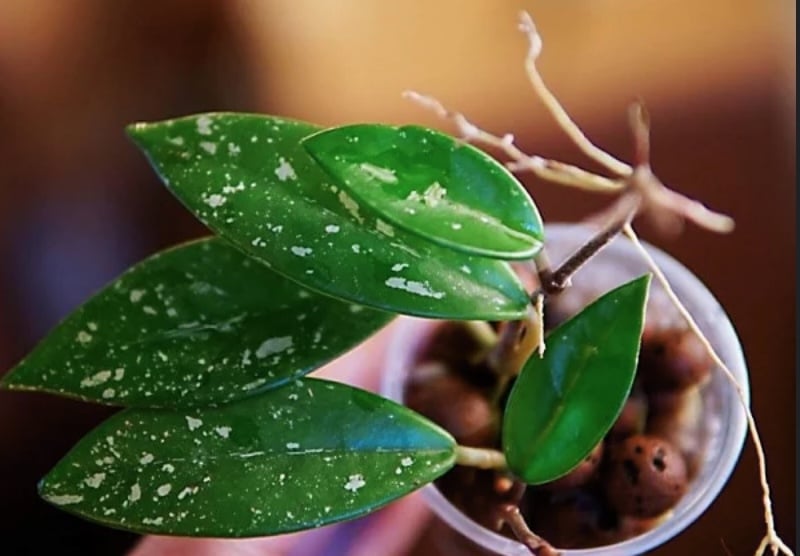The Hoya Wilbur Graves Plant is a beautiful, low-maintenance plant that can be grown indoors or outdoors. It’s a rare plant that can be hard to find. With proper care, it will thrive and bloom for months at a time. This guide will provide you with everything you need to know about growing and caring for the Hoya Wilbur Graves Plant.
What is a Hoya Wilbur graves plant?
The Hoyas genus consists of many species of perennial vines, shrubs, and trees. Hoya Wilbur graves are rare plants that cost about $100 for a small plant or cutting. These plants are part of the Apocynaceae family and have stunning green leaves with silver variegation and splattered markings. The Hoyas Wilbur graves plant produces clusters of fragrant flowers during the spring months.
The Hoya Wilbur graves plant is a climbing vine and will require proper training and support to grow successfully. It’s epiphytic in nature and is an evergreen perennial that’s also called Hoya Carnosa Wilbur Graves.
Related:
How to care for a hoya Wilbur graves plant?
Follow these tips to grow a thriving hoya Wilbur graves plant!
Sunlight Requirement
The Hoya Wilbur Graves Plant grows best in medium to bright indirect light. It can survive low light conditions but will not grow as fast or produce many flowers or leaves.
Temperature
This plant isn’t tolerant of the cold and does well even in temperatures around 55 degrees Fahrenheit. The ideal temperature for the Hoya Wilbur Graves Plant is between 60 to 80 degrees.
If you live in a milder climate, you should take your plant inside in the fall when the temperature drops to 50 degrees Fahrenheit or below. Bring your plant indoors before the first frost. For those of you who live in USDA zones 9 to 11, you can leave your plant outside year-round, and it will benefit from a bit of winter sun.
Humidity
Growing Hoya Wilbur Graves Plants prefer humidity levels around 40 to 60%. If you live in a dry area, you can maintain humidity with frequent misting or grouping tropical plants.
Watering needs
Hoya Wilbur Graves Plants doesn’t need much water. They can be watered about every other week during the growing season, less frequently after the flowering period begins. The Hoya Wilbur Graves Plant is susceptible to root rot, so it needs to be adequately watered and placed in soil that drains well.
Soil
The best soil mixture for the Hoya is a well-draining mix with perlite or sand. You can buy pre-packaged potting mixes for orchids or succulents at most garden stores and nurseries. These types of soils work well for Hoya Wilbur Graves plants.
Fertilization
Hoya Wilbur Graves Plants don’t need to be fertilized often. You can fertilize once in the spring with a balanced fertilizer that has equal parts of each nutrient or just use a high nitrogen fertilizer to encourage leaf growth and flowering during the growing season.
Pruning
The Hoya Wilbur Graves Plant needs support for climbing, so it should be trained on a trellis or mesh of some kind. After flowering, the vines should be trimmed to keep your plant healthy and looking its best.
How to propagate Hoya Wilbur Graves Plant?
While you can grow new plants from seed, Hoyas are usually propagated by cuttings. The best time is early spring, when the plant has just finished flowering. If there was any damage due to cold weather in your area, it’s a good idea to wait until the plant has fully recovered before taking a cutting. Here are some propagation tips:
Always use sterilized scissors or a knife when taking a cutting. This stops the plant from getting an infection.
Place the cutting in filtered water or rainwater until the roots grow.
Once the roots have formed, plant in soil and follow the above care requirements.
Conclusion
If you are looking to add some color and foliage to your home or yard, the Hoya Wilbur Graves plant is the perfect choice. This plant does best when kept indoors until temperatures are consistently above 50 degrees Fahrenheit. Keep it well watered so that the soil doesn’t dry out, but try to avoid overwatering. It only flowers during the spring, but you will enjoy having this beautiful foliage all year long!

